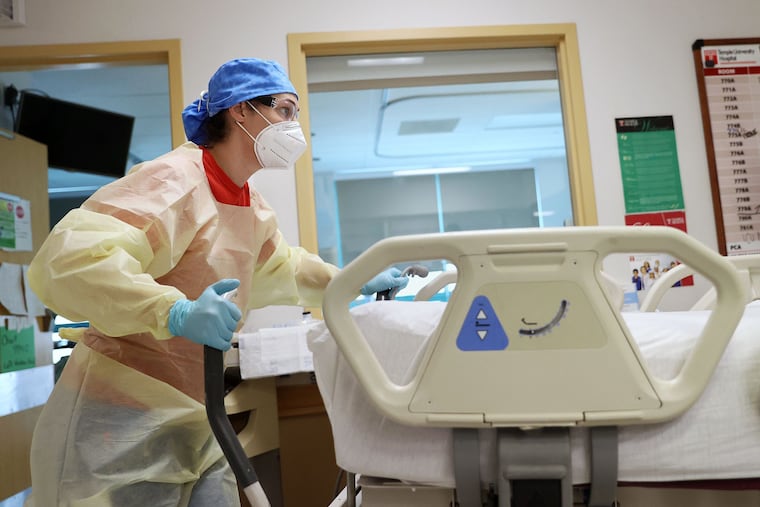Merck study finds survival rates among hospitalized COVID-19 patients rose after early months
The change occurred in all age groups.

A new study adds more evidence that death rates among hospitalized COVID-19 patients fell as doctors gained more experience with the new disease.
It found that overall death rates for hospitalized patients dropped from 19.7% last April to 9.3% in November. The rate for every age group was approximately halved.
The study, published Tuesday in JAMA Network Open, was conducted by a team from Merck & Co. Inc. in New Jersey and North Wales in Montgomery County. It analyzed data from more than 503,000 patients at 209 hospitals but stopped before the winter surge peaked and before vaccinations began.
The study acknowledged that smaller, regional studies had already supported what doctors have been saying for months: Fewer of their COVID-19 patients are dying.
Lyn Finelli, executive director for new vaccines at Merck Research Labs in North Wales, said Merck undertakes epidemiological studies like this to “inform development programs” for its medicines and vaccines and to “identify groups of patients that would get the greatest benefit from our medicines.”
The Merck team said the trend could not be attributed solely to an influx of younger patients. While those aged 18 to 49 did account for a higher proportion of hospitalized patients in June and July, their proportion fell in later months.
Other possibilities included that hospitals had more experience treating COVID-19 patients and knew better how and when to use ventilators in those with the most severe breathing problems. Doctors also began proning patients, or placing them on their stomachs, to improve breathing and learned that systemic corticosteroids and the drug remdesivir led to better outcomes.
» READ MORE: Inside Camden’s fight to vaccinate the most vulnerable
Of the 503,409 patients in the hospitals studied, 42,604 tested positive for COVID-19. In-hospital mortality rates for patients who tested negative were 2.2% for women and 3% for men. Among patients who tested positive, 9.6% of women died, compared with 12.5% of men.
Throughout the months studied, the age group most likely to be hospitalized with the coronavirus was people 65 and over. Death rates from the virus rise with age.
The study found that death rates peaked among people above 75 at around 36% last April, fell to 15% in August, and rose to 17% in November. Among those 65 to 75, the rate peaked in April at 23% but fell to 10% in November. People 50 to 64 also saw the spring peak — 13% — but their death rate fell to 5.4% by November. Those aged 18 to 49 had a death rate of 4% or less for most of the studied months. Only 0.2% of children hospitalized with COVID-19 died.